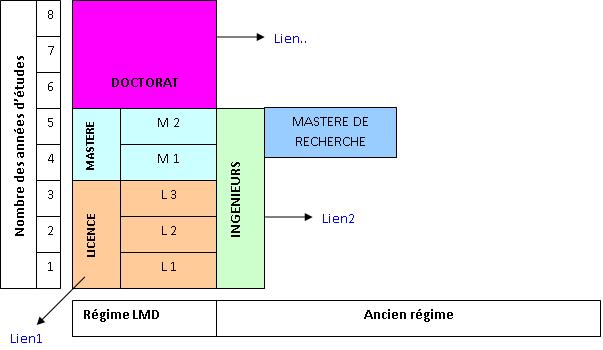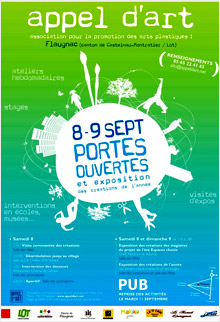Discover
Training:
What do you know about the "LMD" system?
Licenses training offer
Engineering Sciences training offer
Masters training offer
PhD training offer
Certifications
Continuous training
Useful resources and documentation
What do you know about the "LMD" system?
A-Basic orientations of the LMD reform
- Training in three steps:
- Mobility and flexibility: Progressive guidance, curriculum restructuring etc...
- Semester System and division into The European Credit Transfer System (ECTS) Credits
- Organized training in large domains with typical courses.
- Promote the students' success with diversified training offers and better pedagogical support.
B-The LMD reform objectives
Establish a training system characterized by flexibility and international comparability.
Reforming programs and diversifying pathways in promising niches.
Create flexible and efficient training courses of an academic and applied nature, offering students, at all levels, opportunities for professional integration.
Promote students' mobility nationally and internationally.
Offer the student the opportunity to restructure his career in the course of training..
Facilitate the equivalence of diplomas.
Create a new generation of versatile graduates who can adapt to a changing global environment
To ensure that all concerned parties (students, parents, professionals, employers, etc.) have a better legibility of training degrees and levels of professional integration.
Training offers should favor the orientation of two thirds (2/3) of students towards applied, professional courses and one third (1/3) towards basic courses. Higher education and research institutions currently providing master’s courses are called upon to reform their training provision, taking account of these proportions.
The student at the heart of the LMD reform flexible training, progressive orientation, bridges, better pedagogical support
- Information, reception and educational support for students in their institutions.
- In order to consolidate the general training of students, to help them to restructure their careers and strengthen the employability of graduates, higher education and research institutions organize joint courses for students of both types of license, during the first year, in the form of compulsory or optional units.
- >Students can reorient or restructure their training courses:
- Mobility Context: in order to allow students to restructure their courses at the end of the first year, the academic institutions create a reciprocal movement between the applied licenses and the basic licenses, within the limit of 10 % of the capacity of acceptance
- By participating in competitions organized by higher education and research institutions within the same university or between universities
- By participating in the annual national reorientation competitions.

|
















